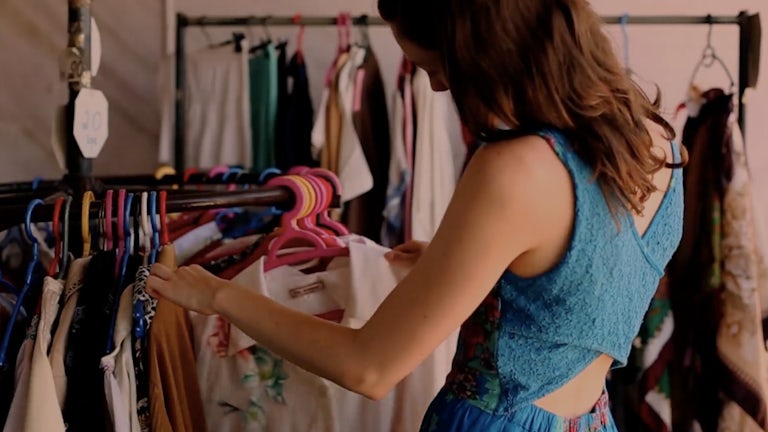Shopping Bag (0)
Your shopping bag is empty


Second-hand clothing to overtake fast fashion...
Move over fast fashion, second-hand clothing is the next big thing.
New York University business professor and renowned tech pundit Scott Galloway predicts global sales of used clothing will be "a bigger business within nine years than fast fashion".
"The new disrupter in retail, the new gangster that’s going to create hundreds of billions in shareholder value is the second-hand resale market," Mr Galloway said, speaking at the INFORM News Media Summit 2019. "It’s being driven by young people."
Mr Galloway said the second-hand clothing market "ticks a lot of boxes in terms of trends", including concerns over sustainability and the fact 30-year-olds have less disposable income than their parents did at the same age.
Business analyst IBISWorld estimates fast fashion was worth $2.1 billion in Australia in 2018. The sector is marked by cheap, often lower-quality clothing produced in as little as two weeks in response to trends for brands including H&M, Zara, Cotton On, Valleygirl, GAP and Topshop. In September, global fast-fashion label Forever 21 filed for bankruptcy in the US.
Earlier this year, a US report said the second-hand clothing market was worth $US24 billion ($35.5 billion) in the US in 2018, versus $US35 billion for fast fashion. By 2028 used clothing is set to grow to $US64 billion in the US, while fast fashion will only reach $US44 billion, with the trend mainly driven by Millennials and Generation Z.
Krupali Cescau, director of brand agency Amplify, said the second-hand clothing boom tapped into consumer trends for Generation Z in Australia.
Amplify commissioned a national survey of more than 2000 Australians aged 18 to 30, which found one in four are concerned about the environmental impact of the clothing they buy and one in five are worried about ethical issues such as sweatshop labour.
A federal government report says Australia produces 800,000 tonnes of textile, leather and rubber waste (excluding tyres) – 32.5 kilograms per person – every year.
Ms Cescau said 41 per cent of young people felt guilty about buying things they don’t need and that was a “massive” indication that ethical shopping and second-hand buying could be future trends.
“[Young peoples'] value systems are quite progressive but their behaviours haven't quite caught up with them yet,” she said.
Second-hand clothing has moved beyond the op shop and weekend markets. There are now chain stores of carefully curated vintage shops, such as SWOP with outlets in Newtown in Sydney, Collingwood in Melbourne and two stores in Brisbane.
LuxeSTYLE by Maxi-Cash recently launched a store in Melbourne's CBD specialising in selling second-hand designer handbags, watches and jewellery from brands such as Rolex, Cartier, Bvlgari, Chanel, Prada and Louis Vuitton.
And while consumers have long bought and sold clothing on eBay and through Facebook groups, there is now a groundswell of mini-businesses selling vintage clothes online. Many sellers display their wares through Instagram, craft and vintage marketplace Etsy and social second-hand selling app Depop.
Both Kara Otter, 30, from Bondi in Sydney and Jana Harvey, 23, from Fitzroy North in Melbourne are selling at physical markets and online, with Depop providing particularly strong growth.
Ms Harvey said buying and selling used clothing “started more as an affordable way to be on trend” but sustainability was growing in importance.
“I think people need to start rethinking how they buy,” Ms Harvey said. “It's just a bit of time, a bit of effort, and it can make such a big difference.”
Ms Otter left her job as a designer in the fast-fashion industry, in part because she was so appalled by the “amount of sampling, plastic waste and polyester stock that didn’t sell” that was business as usual in the trade.
“I’d find designs that I'd made only a few months earlier sitting in op shops,” Ms Otter said. “If you've got a conscience when it comes to the environment, it is pretty full on to see how quickly these trends move.”
originally featured as part of a The Sydney Morning Herald